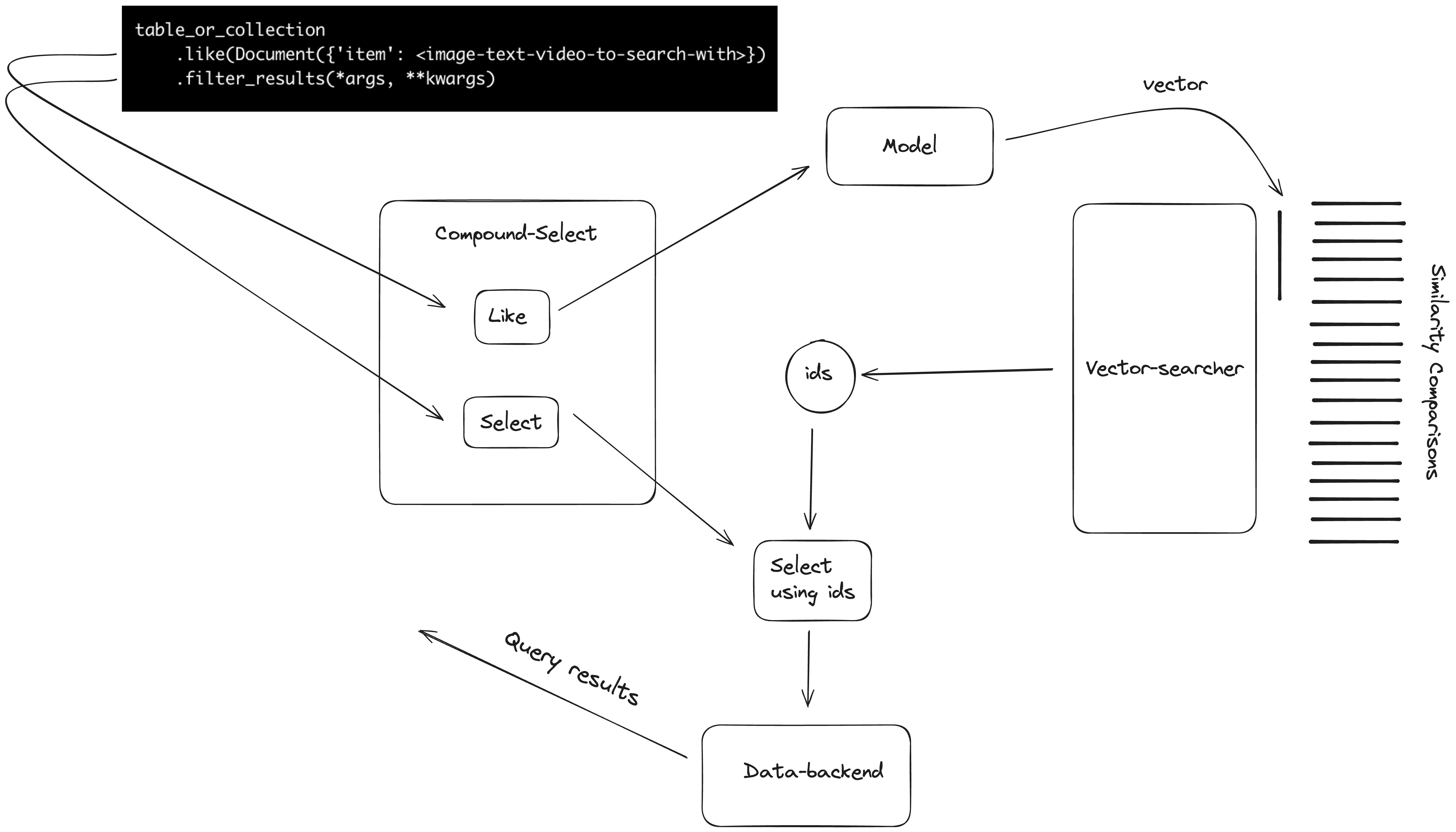Vector-search
Superduper allows users to implement vector-search in their database by either
using in-database functionality, or via a sidecar implementation with lance and FastAPI.
Philosophy
In Superduper, from a user point-of-view vector-search isn't a completely different beast than other ways of using the system:
- The vector-preparation is exactly the same as preparing outputs with any model, with the special difference that the outputs are vectors, arrays or tensors.
- Vector-searches are just another type of database query which happen to use the stored vectors.
Algorithm
Here is a schematic of how vector-search works:

Explanation
A vector-search query has the schematic form:
table_or_collection
.like(Document(<dict-to-search-with>)) # the operand is vectorized using registered models
.filter_results(*args, **kwargs) # the results of vector-search are filtered
table_or_collection
.filter_results(*args, **kwargs) # the results of vector-search are filtered
.like(Document(<dict-to-search-with>)) # the operand is vectorized using registered models
...or
The type of such a query is a CompoundSelect. It's 2 parts are the vector-search part (like) and the
filtering part (select).
In the first case, the operand of like is dispatched to a model, which converts this into a vector.
The vector is compared to previously saved outputs of the same or a paired model (multi-modal).
The most similar ids are retrieved. The select part of the query is then transformed to
a similar query which searches within the retrieved ids. The full set of results are returned
to the client.
Read here about setting up and detailed usage of vector-search.